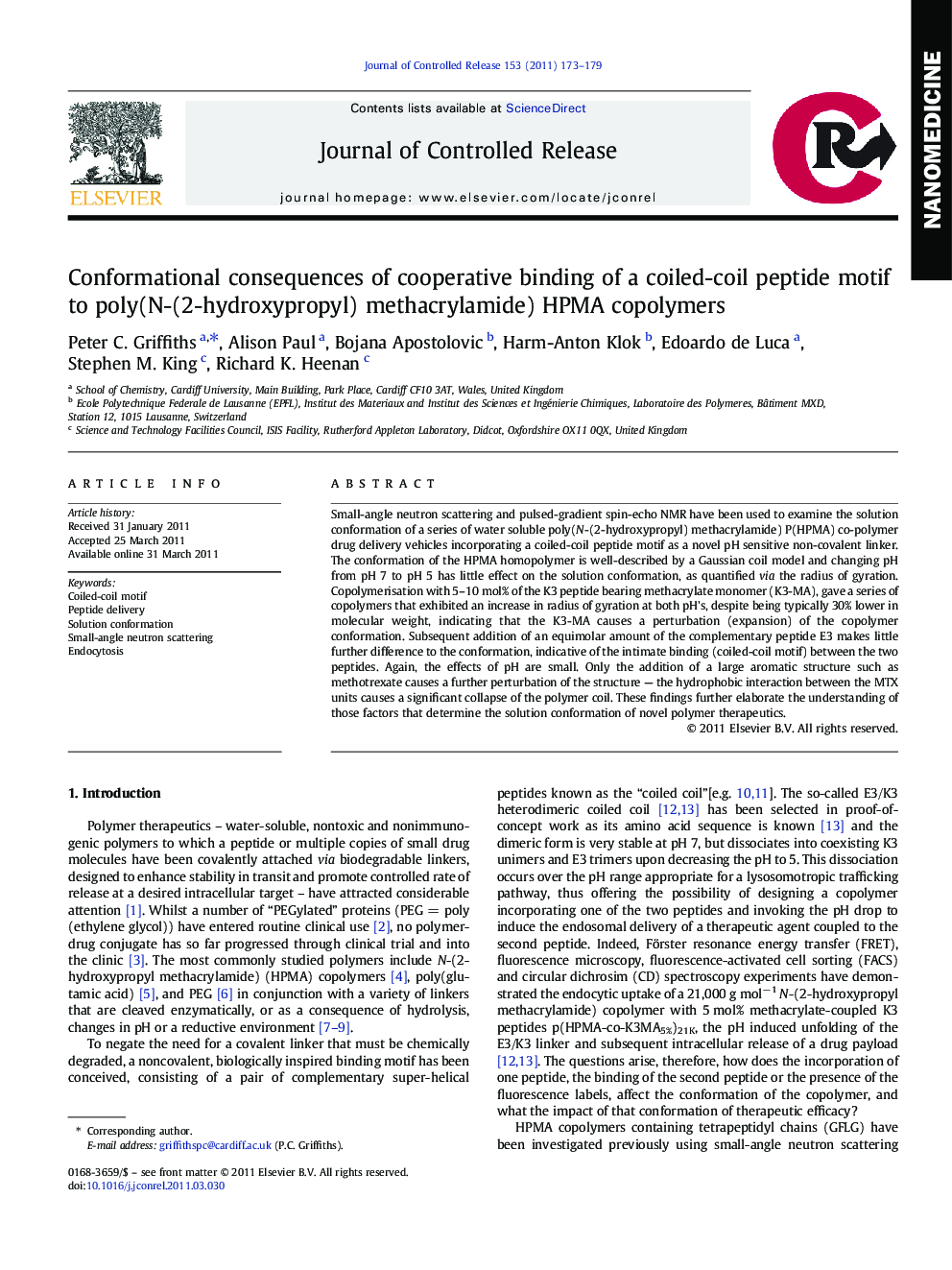| کد مقاله | کد نشریه | سال انتشار | مقاله انگلیسی | نسخه تمام متن |
|---|---|---|---|---|
| 1425224 | 986756 | 2011 | 7 صفحه PDF | دانلود رایگان |

Small-angle neutron scattering and pulsed-gradient spin-echo NMR have been used to examine the solution conformation of a series of water soluble poly(N-(2-hydroxypropyl) methacrylamide) P(HPMA) co-polymer drug delivery vehicles incorporating a coiled-coil peptide motif as a novel pH sensitive non-covalent linker. The conformation of the HPMA homopolymer is well-described by a Gaussian coil model and changing pH from pH 7 to pH 5 has little effect on the solution conformation, as quantified via the radius of gyration. Copolymerisation with 5–10 mol% of the K3 peptide bearing methacrylate monomer (K3-MA), gave a series of copolymers that exhibited an increase in radius of gyration at both pH's, despite being typically 30% lower in molecular weight, indicating that the K3-MA causes a perturbation (expansion) of the copolymer conformation. Subsequent addition of an equimolar amount of the complementary peptide E3 makes little further difference to the conformation, indicative of the intimate binding (coiled-coil motif) between the two peptides. Again, the effects of pH are small. Only the addition of a large aromatic structure such as methotrexate causes a further perturbation of the structure — the hydrophobic interaction between the MTX units causes a significant collapse of the polymer coil. These findings further elaborate the understanding of those factors that determine the solution conformation of novel polymer therapeutics.
Figure optionsDownload as PowerPoint slide
Journal: Journal of Controlled Release - Volume 153, Issue 2, 30 July 2011, Pages 173–179